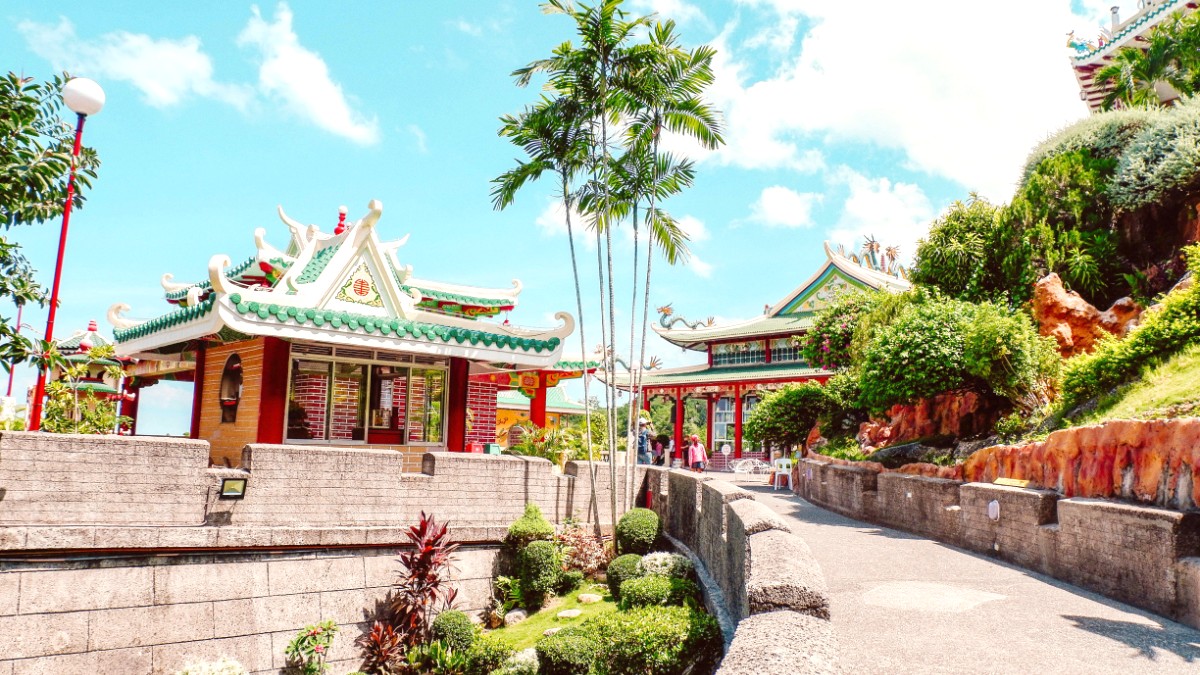
The Visayas, Philippines
Here are must-visit sites with historical and cultural context:
Explore Cebu's foundational historical sites, each narrating a significant chapter in the province's development.
These sites offer a mix of historical, religious, and scenic experiences for a well-rounded visit.
Some hotels and shopping malls in Cebu City have small art exhibits. The University of San Carlos Museum has ethnographic and archaeological collections. For contemporary art, check local listings.
Formal exhibition spaces dedicated solely to art are not numerous. Some cultural events may include temporary exhibits.
Local universities and community centers occasionally host cultural presentations. Inquire about schedules.
Look for local theater groups or musical performances in larger venues or university auditoriums.
Visit local markets for traditional handicrafts and artisan products.
Beyond the main landmarks, Cebu’s historical sites continue to tell the story of its past.
This site contains one of the oldest preserved Jesuit houses in the Philippines. It is a rare look at Spanish colonial architecture and the daily life of the period. The ruins show old wells and stone structures. Open 9:00 AM - 5:00 PM daily. Around ₱100.
A historical landmark, Colon Street holds the distinction of being the oldest street in the Philippines. Open 24/7 as a public street. Free to walk along.
This colorful and ornate temple complex was built in 1972 by the Chinese community. It is a place of worship and has panoramic views of Cebu City from its elevated position in Beverly Hills Subdivision. Its distinct architecture provides a contrast to the Spanish colonial sites. Open 7:00 AM - 5:00 PM daily. Free entry.
Cebu's history has many archaeological discoveries that point to early settlements and trade with Asian neighbors before Spanish arrival. Artifacts are sometimes displayed in museums.
Efforts are made to preserve these historical structures and archaeological sites to maintain their integrity for future generations and research.
Guided walking tours often cover these historical areas, providing narratives and context that bring the past to life.
Cebu’s strong Catholic heritage means numerous churches hold historical and spiritual significance. The Cebu Metropolitan Cathedral is the ecclesiastical seat. Sto. Tomas de Villanueva Parish Church is one of Cebu's oldest. Simala Shrine (see 8.1) is a popular pilgrimage site.
Pre-Colonial Era: Early settlements, trade. Spanish Colonial Period: Magellan's arrival, first Spanish settlement. American & Japanese Eras: Transition to American rule, WWII occupation. Post-War to Present: Reconstruction, independence, modern development.
They highlight the fusion of different cultures that shaped Cebuano identity.
Cebu's natural beauty shines through its parks, waterfalls, and diverse marine environments.
Venture beyond the well-known sites to discover Cebu's less-explored treasures.
Camotes Islands: Pristine beaches, intriguing caves. Badjao Community (Mactan Island): Learn about their unique culture. Dao Falls (Alegria): Less crowded Kawasan alternative, unique rock formations. Aguinid Falls (Samboan): Multi-tiered waterfall, climb up five levels.
Taboan Market (Cebu City): Famous for dried fish. A raw, sensory local market experience. Mountain View Nature's Park (Busay, Cebu City): City views, swimming pools, relaxed atmosphere. Popular with locals for picnics.
Malabuyoc (Southern Cebu): Becoming popular for its ecotourism, with several waterfalls and natural pools, including the Mainit Hot Spring & Falls. Opportunities for new explorations.
The tiered turquoise waters and lush jungle environment are highly photogenic.
Explore CanyoneeringAn emerging street art scene exists in certain areas of Cebu City, with colorful urban backdrops.
Experience the bustle and unique offerings of this local market.
Cebu City and its surroundings use various local transport options.
For local trips, familiarization with options aids smoother travel.
For exploring historical sites or natural attractions, consider hiring a local guide.
They give cultural context and increase safety, especially in remote areas.
Cebu's varied terrain and infrastructure have diverse accessibility conditions.
Modern malls and hotels in Cebu City (Ayala, SM) have accessible restrooms and ramps. Sidewalks in older areas can be uneven.
Public transport (jeepneys, buses) has limited accessibility for wheelchairs. Taxis and Grab have more flexibility.
Historical sites like Fort San Pedro have uneven surfaces. Natural attractions (waterfalls, peaks) have limited or no accessibility.
Consider alternative activities if mobility is a major concern for natural attractions.
Proactive planning helps ensure a smoother travel experience. Research and confirm arrangements in advance.
Newer properties often have accessible rooms and facilities. Always verify when booking.
Some tour operators specialize in accessible travel. Communicating needs clearly when booking activities is important.
This ensures activities meet individual needs. Be specific about any required assistance.
Witness millions of sardines schooling just offshore. This world-class diving and snorkeling experience needs no boat trip; it is visible from Panagsama Beach.
World-renowned for its opportunities to see thresher sharks at Monad Shoal. These graceful sharks visit the shoal for cleaning by smaller fish.
A popular activity where visitors swim with whale sharks. Ethical concerns exist regarding feeding practices to keep sharks in the area. Research thoroughly before participating.